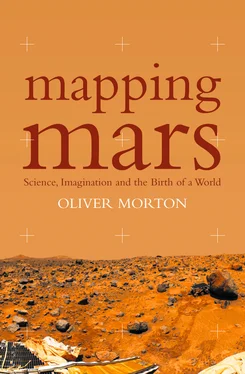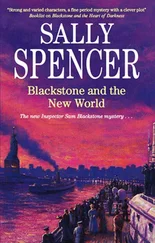* They were not the first planetary maps to get to the highest offices. Maps of the moon by the engineer James Nasmyth – better known for his steam hammer – so fascinated Prince Albert that he had Nasmyth present them to Queen Victoria, who was duly impressed.
Then felt I like some watcher of the skies
When a new planet swims into his ken;
Or like stout Cortez when with eagle eyes
He stared at the Pacific – and all his men
Looked at each other with a wild surmise –
Silent, upon a peak in Darien.
John Keats, ‘On First Looking into Chapman’s Homer’
On 13 February 1969, nine days before Mariner 6 set off for Mars and five months before Neil Armstrong was to step on to the dust of the Sea of Tranquillity, the newly inaugurated president, Richard Nixon, asked his vice-president, Spiro Agnew, to explore the options for a post-Apollo space programme. Agnew became enthused. When Apollo 11 made its historic landing that July, he talked of committing the nation to the goal of sending people to Mars. The report of Agnew’s Space Task Group, offered to the president in September 1969, discussed this possibility and many others – but more or less ignored the question of how much it was going to cost. Nixon could not allow himself that privilege.
In May 1971, the month Mariner 9 was launched, the Office of Management and Budget (OMB) informed NASA that its budget, already significantly cut back from its mid-1960s heights, would be frozen for five years. On 5 January 1972, two months after Mariner 9 reached Mars, President Nixon authorised NASA to start work on a reusable Space Transportation System – the space shuttle. There was severe doubt – at OMB and elsewhere – as to whether this was wise; NASA’s claims that it would make space travel far cheaper were highly dubious. But it was the least ambitious thing on offer that would keep people flying into space. And people in space, even if they had nowhere particular to go once they got there, was an idea that meant something to Nixon and to many of the men around him.
From 1972 onwards the space shuttle was central to NASA’s institutional survival. A national means became the agency’s end. Almost everything else was either a distraction or, if it looked expensive, a threat. The planetary missions already approved – the Pioneer 10 and 11 missions to Jupiter and Saturn, and the Viking missions to Mars – were not in too much trouble. But missions not already accepted were delayed and scaled back. The ambitious TOPS probes to the outer solar system that JPL had been planning were replaced with enhanced, enlarged versions of the now ageing Mariner spacecraft design. In the end that did little harm – launched in 1977, the Voyagers were a spectacular success. But they were the last hurrah of the ’60s horde. Between 1979 and 1991 JPL launched only two more planetary spacecraft. *
It was in this climate of cutbacks that the Viking landers lowered themselves to the surface of Mars in 1976. For years they sampled dead soil, analysed dry winds and photographed barren landscapes at two unprepossessing sites in the planet’s northern hemisphere. In engineering terms they were a spectacular triumph. Their accompanying orbiters, meanwhile, added huge numbers of new pictures to the Mariner archive. And that was just as well, since the Viking treasury was to be the raw material for most of the next two decades of Mars research. The Viking missions were the most expensive effort in the history of planetary exploration and their single take-home message, according to most of the scientists involved, was that Mars was as lifeless seen from the surface as it had appeared to be from orbit. Expensive, dead and already the subject of overflowing data archives; to NASA budget-setters Mars looked like a pretty good place not to return to.
Which didn’t mean that scientists stopped talk about new missions to Mars. At any given time there will always be lots of ideas for missions that someone or other dearly wants to see fly. Some are little more than water-cooler chatter. Some are studied but never approved. Some are approved but then dropped. Each one that flies leaves the ashes of a dozen other dreams in its wake. The field of planetary science is full of brilliant people in their forties who have still never managed to get an instrument they defined or built on to a spacecraft, never gaining the status of a principal investigator.
In the early 1980s one of the competing dreams was a spacecraft called Mars Geoscience/Climatology Orbiter. Its proponents admitted that, yes, it did seem that Mars was a dead planet, both biologically and geologically. Although there were arguments about how to date features on the surface – arguments which will be discussed later, along with many other scientific issues some readers probably think I’m passing over too quickly at the moment – most of the interesting events in Martian history were thought to have happened billions of years ago. But dead could be interesting and besides, Mars had only been studied from a fairly narrow point of view. Most of the data were in the form of pictures. To geologists like Hal Masursky and his crew, these pictures were great. Geologists are interested in stories about which rocks are where and how they got there. While pictures taken from orbit were not terribly good guides to the nature of the rocks, their form and arrangement – the morphology of the surface – were well captured, and that provided a lot of grist to the geological mill.
Geology, though, is not the only way to study a planet. Geophysicists are interested in understanding physical forces and processes, something they seek to do in large measure by building mathematical models. From this point of view pictures, while pretty, are no substitute for numbers. Geochemists are interested in the chemical elements from which planets are made up. Climatologists want to know whether they can understand the atmosphere’s behaviour. All these disciplines had an interest in Mars that the Viking data-set couldn’t satisfy. A modest orbiter dedicated to geophysics, geochemistry and climatology might be able to fill in the gaps in humanity’s knowledge of Mars – the mineral composition of its surface, its precise shape, the strength of any magnetic field, the structure of its atmosphere – with model-friendly numerical data.
The argument was pretty good, the prospective investigators were widely respected and the idea that the spacecraft could be a cheap modification of a design already used for satellites orbiting the earth was a plausible and appealing selling point. Indeed, the idea was intriguing enough that it started to grow. If a small geosciences spacecraft could be sent to Mars, why not send a similar one back to the moon? Or to orbit an asteroid? Buying the same design and components in bulk would keep the prices down, after all. And so the geoscientists’ Mars mission became Mars Observer, first in a new line of Observer spacecraft. Under pressure from geologists like Masursky – and with an eye to public relations – NASA added a small, comparatively cheap camera to the design; left to the geophysicists, Mars Observer would have no ability to take pictures in any usual sense of the word.
One of Mars Observer’s objectives was to get a detailed picture of the planet’s relief. The Mariner and Viking scientists had used a wide number of different techniques to try to calculate how high features on the Martian surface were. They used triangulations based on the visual images. They used the precise instants at which radio signals from orbiters were cut off as they passed behind the planet. They used subtle differences in the amount of infrared and ultraviolet light reflected from different parts of the planet through different depths of atmosphere. They used narrow beams of radio waves bounced off the surface by earth-based radio telescopes. All these different measurements were synthesised by Sherman Wu, in Flagstaff, to provide contours for the Survey’s maps. But even Wu did not think the elevations he painstakingly arrived at were accurate to more than about a kilometre.
Читать дальше












